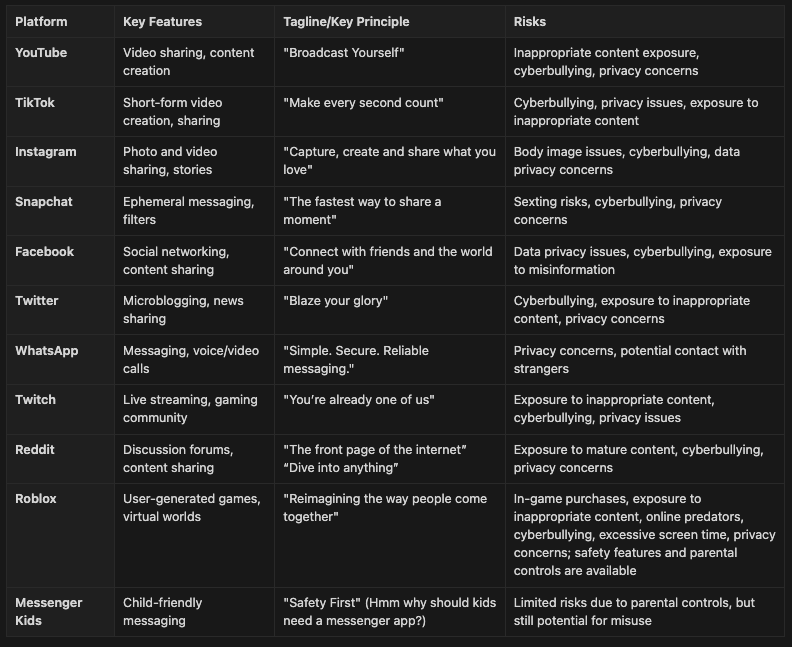Is Your Child Really Safe Online? A Parent's Guide to Cybersecurity
I'm at the start of my journey into understanding cybersecurity, particularly as it impacts children navigating the vast, often unregulated world of social media. My goal is to share insights and learn from your experiences. With the rapid evolution of this field and countless platforms, staying informed is a constant challenge.
Today, so much of our lives—family, friends, shopping, work, school, messaging, photos, social media, entertainment, and banking—revolves around a single device. As adults, we’re still learning how to manage this digital world, while our children are introduced to it at an even younger age. The average child gets their first phone by age 11, and one in three children aged 6 to 13 already owns the phone they use.
Teaching our children about cybersecurity is no longer optional; it's essential. It goes beyond passwords and firewalls; it’s about equipping them with the knowledge and confidence to navigate the digital world safely. Cybersecurity isn’t just about tech—it’s about protecting their hearts and minds. Do they recognize when someone is trying to take advantage of them? Are they prepared to say “no” to strangers online, or to ask for help when facing bullying?
The statistics are striking: 89% of children aged 3-17 use YouTube, and 60% of 8-11 year-olds have their own social media profiles. It's startling to learn that even 16% of 3-4 year-olds watch videos on TikTok, which one hopes is under parental supervision. By understanding the platforms they use, the risks they face, and the safety measures we can adopt, we can empower our children to thrive safely in the digital age.
I encourage you to explore age-specific statistics in the 2022 Ofcom report to gain further insight. Here’s a snapshot of what I’ve discovered, which I hope offers a window into the realities of children’s online presence. This is likely just the tip of the iceberg.
Most popular social media platform by age categories (3, 4)
Brief overview of the top social media platforms, including their taglines and potential risks. Obtained from various sources on the internet.
Practical Strategies for Parents: Navigating the Digital World Together
The risks of the digital world are real, but as parents, we have the power to guide our children and help them build resilience. Here are practical strategies that I’ve picked up from ySafe Cyber Safety Seminar.:
1. Foster Open Communication and Educate:
Talk openly about online safety: Discuss potential dangers, such as cyberbullying, inappropriate content, and online predators. Let your children know they can come to you if something online makes them uncomfortable.
Stay informed: Keep up with the latest trends and platforms your children use. Familiarize yourself with the privacy settings and safety features each app provides.
2. Set Clear Rules and Boundaries:
Create a family technology plan: Set expectations for screen time, device usage, and online behavior.
Establish limits: Define appropriate times and places for device use and implement time restrictions to manage screen time effectively.
3. Utilize Parental Controls and Monitoring:
Use parental controls: Set up these features to filter content, block harmful sites, and regulate screen time.
Monitor activity: Especially for younger kids, know what apps they use, which websites they visit, and who they interact with.
4. Teach Responsible Online Behavior and Critical Thinking:
Protect personal information: Teach your children to be cautious about what they share and avoid disclosing details like their full name, address, or phone number.
Promote critical thinking: Help them question the validity of the content they encounter and understand which sources to trust.
5. Model Healthy Digital Habits:
Lead by example: Demonstrate responsible online behavior and maintain healthy screen time. Engage in positive online interactions and set an example by limiting your own social media use around your children.
6. Seek Support and Resources:
Connect with a community: Engage with other parents, educators, and experts to share tips and learn from each other. Join our Parenting Success Network Facebook group to stay updated.
Explore safety resources: Use information from trusted organizations like ySafe, which offers comprehensive guidance for protecting children online.
By implementing these strategies and maintaining open communication, we can empower our children to explore the digital world confidently and safely.
Note: The information provided here are a general guidance, obtained from various sources on the internet and seminars. Information may change over time. The information here, or anywhere else on this website is not meant to be a substitute for legal, medical or other professional advice. Please seek appropriate help where available.
References:
Kids and mobiles: How Australian children are using their mobile phones. Australian Communications and Media authority. https://www.acma.gov.au/publications/2020-12/report/kids-and-mobiles-how-australian-children-are-using-mobile-phones?t. Accessed: 2nd November 2024,
Children and parents: media use and attitudes report 2022. In Ofcom (2022). https://www.ofcom.org.uk/__data/assets/pdf_file/0024/234609/childrens-media-use-and-attitudes-report-2022.pdf. Accessed: 1st November 2024.
EA Vogels, R Gelles-Watnick and NN Massarat. Teens, Social Media and Technology (2022). https://www.pewresearch.org/internet/2022/08/10/teens-social-media-and-technology-2022/?t. Accessed: 1st November 2024.
S Kuss. How social media affects children at different ages, and how to protect them. The Conversation (2022). https://phys.org/news/2022-04-social-media-affects-children-ages.html?t#google_vignette. Accessed: 1st November 2024.


